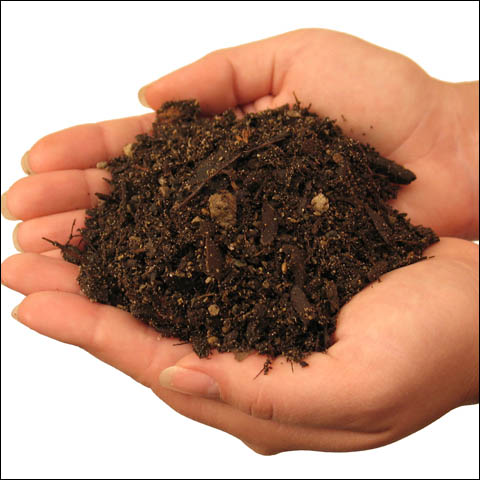
Very loosely translated, Albert Einstein said particles of light rush through space at about 700 million miles per hour. Holy cow! It’s a wonder our green plants capture light at all then extract its energy so we can spend our lives worrying about things other than our next meal.
Plants, however, do not live on light alone. They munch dirt which gardening purists call “soil.” The ideal depth of a garden’s soil should be 12-18 inches though Square Footers use only 6 inches. The Ancient Cross Timbers area features dense clay soils that wet or dry form those sticky, curse-inducing lumps we hate wrestling. Prove me wrong?
Good soil has roughly equal parts of clay (teensy particles), silt (lake bottom crud), sand (fat particles), and organic matter (decomposed or decomposing gunk). Live roots penetrate this combination platter to slurp in its water reserves and nutrients. Gardeners amend dirt or poor soils by (a) adding missing parts, or (b) carting in truckloads of good soil.
Garden suppliers sell soil, as opposed to dirt, under the name Landscape Mix. Fruits and veggies don’t turn down amendments with their landscape mix. Soil shouldn’t flow like hourglass sand or get so rock hard it begs for Michelangelo’s hammer and chisel. The stuff should crumble. Excuse the pun here, but building soil is an art worth cultivating.
Water’s ability to dissolve minerals to feed plants depends on the amount of acid or alkali substances in the basic soil. Some plants like “sour” or acid cuisine with plenty of peat, or a menu “sweet” with alkaline substances like lawn lime. Camellias and blueberries come to mind in the first instance and lilacs and lettuces in the second. Dark brown forest soil is acid, and the beige west Texas desert soils are alkaline. As Yogi Berra might have said, “You can see a lot by looking” at soil. Ordinary garden fruits and vegetables favor a balanced mix.
If your plants don’t look hail and hearty take a soil sample to a nursery for testing. It’s cheap, the results come with good advice, and best of all your plants will love you for all the TLC. Remember plants “eat” down the soil so maintain the garden’s depth by adding tasty amendments when the spirit moves you. Reach for the stars because the magic number is 12-18 inches deep. That’s a tall order.
Kitchen waste makes the microbes and macrobes in soil go ooh-aah. The little critters digest big chemical compounds into smaller items then deposit them in the soil. I bury leftover vegetable matter directly in my garden about 8-10 inches down, a spade’s depth. Called “sheet composting” this method works dandy in North Texas summer heat. After about a week the leftovers have disappeared. The process takes a little longer in cooler winter weather. Who knew worms etc. had such voracious and efficient appetites? Don’t forget to add water because any ghoul will tell you decomposition is gooey business.
Two words to the wise: (1) worms turn up their little noses at citrus, and (2) carnivore offal contains pathogens that make American insides sick so limit amendments to plant matter and manures from vegetarian critters like cattle, horses and chickens.
The writer is a Texas Agri-Life Master Gardener and Plant Propagation Specialist.
















